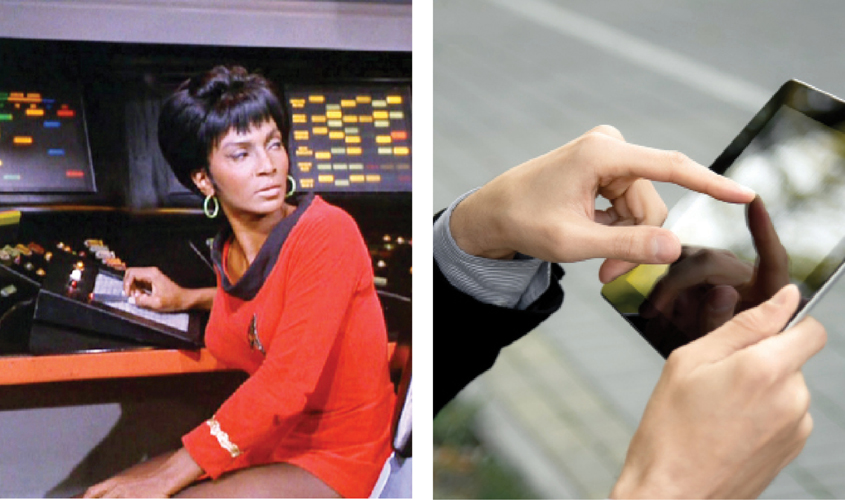The presence of science fiction can be traced even in Indian mythological history. Mahabharata of the 8th and 9th centuries shows us King Kakudmi who undertakes a journey to the heavens and upon his return to Earth realises that much time has passed, even though he remains the very way he was when he left for the heavens. Even though the myth focuses on the King’s journey to meet Brahma what we cannot help but notice is that this somehow is a foregrounding of the ideas of time travel. Among the first ever records of science fiction in the history of humankind is in myths. But now things are different, especially with movies and books — specific objects which were imagined into these stories are no longer just imaginations in
our world.
Star Trek serves ample examples of fictive scientific objects which have turned into reality. The first of many is the “PADD” which was a flat object with a screen and could be operated by touch. This object was thought up by the series’ writers in the 1980s. Today this object is the real and easily purchasable iPad. The writers on the show also accept the “eerie similarity” between their fictional object and the very real iPad. There are also the Star Trek 3D replicator and virtual display devices which today are the real 3D printers and the Google Glass. There is the possibility of the Lightsaber becoming a reality too given the research being conducted by students at Harvard — a soon to be realised dream.
There have been other movies like Minority Report which spoke of facial recognition systems which today exist. Along with Minority Report, Total Recall showed us self-driving cars which are being researched into with great amount of efforts being put in by big corporations. Quite a few of self-driving cars already exist as a result of Google’s tie-ups with big automobile producers. In the movie Ender’s Game, based on a novel of the same name, there was the first mention ever of an “anti-gravity chamber”. If you’d like to go to one of those you don’t have to dream it anymore.
The film Total Recall first showed us self-driving cars, a topic which is today being researched with great gusto by big corporations and tech firms.
Works of literature, novels, have been the most recognised and pioneering forms to have imbibed science fiction in a truly limitless sense. When Jules Verne wrote his Twenty Thousand Leagues Under the Sea (1869), he made Captain Nemo the commandeer of an electrically-powered vehicle which was able to travel under water. The fictive machine soon turned into a reality which we know better today as the submarine.
The cartoon series The Jetsons delved into the life of a family living in the future. The story ended up creating fictive elements like food ordering services, robotic cleaning maids, tanning lamps and Sleek TVs which back then had no real presence, but today each and every one of those fictional objects is a reality — you can order food over online applications, you have robots which can clean floors, tanning beds are a hit in the US and flat screen televisions are present in almost all middle-class homes.
The interesting point of such daring feats of fiction is that they were clearly invented by artists who had an eye towards the near-future. And human beings from that “near-future” took inspiration from those fictional narratives and turned them into hard facts. It has also led to other scientific research programmes which aim to turn things seeming too fictional or too futuristic into something real and practicable. The “proof-of-concept” studies organised by Microsoft released an idea of a gaming station which can engage the user by immersing the player more. It does so by uniting the virtual game space with the real room space. This is one of the many research areas and think tanks which are busy thinking up only imaginable objects and working to turn them into tangible realities.

